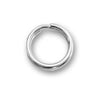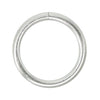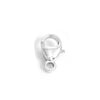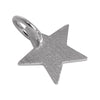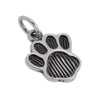The History of Charms
The History of Charms and Charm Bracelets: A Short Introduction by David Clark
Although it is almost impossible to determine when charm bracelets appeared in their modern form, charms, miniature figurines and decorative pendants used to be worn as an amulet to deter evil spirits and bad luck. Indeed the carrying of charms to ward off evil dates back to the Neolithic era in which hunters would carry interesting stones and trinkets for good luck. It wasn’t until the Egyptian Age that we have evidence of Pharaohs being buried with elaborate gold and silver jewellery and jewellery embedded with precious and rare stones. It is in many of such tombs that archaeologists rescued the first recognisable examples of charms and charm bracelets.
The first record of charms being used as a means of a symbol of one’s own life was in Rome, where Christians, fearful of letting others know their own religious belief used to carry small charms in the shape of a fish. This let other Christians know of their religious leaning. The fish charm here was used because of the Greek word for fish (“ichthys”) which was an acronym for “Ἰησοῦς Χριστός, Θεοῦ Υἱός, Σωτήρ” (Jesus Christ, Son of God, Saviour). With a fascination for symbols the Greeks and Romans wore other such charms, again mainly out of superstition and respect for the Gods. Lockets were used to keep important information both in a practical sense, and because of a belief that if the information were stored close to the heart and mind then the body would better absorb it. At times of war men would often carry a lock of their wife’s hair and other such trinkets as a reminder, and also for good luck.
The role of charms, however changed over time from that of practical use and as a means of warding off evil, to a purely aesthetic one. Queen Victoria’s own fascination with charms, jewellery and pendants made charm bracelets enormously popular amongst the gentry of the time, as a luxurious fashion items. At such a time it was common for the wealthier classes to show off their fortune by wearing elaborate and exotic clothing, and the wearing of charm bracelets as a fashion accessory.
It wasn’t until World War II, however, when soldiers, who collected trinkets as a reminder of men they knew, the women they loved, and their time in battle that the wearing of charms really took off throughout Britain and the rest of Europe. Fighting, often away from their loved ones for years at a time, soldiers would buy small reminders of the places they had been as presents for their families back home. Such presents, some bought, others found, seemed to encapsulate moments from the soldiers’ time away and as such charms became hugely popular as a means of capturing emotion and personal memories. Since then charms have often been collected as reminders of good times, and because they signify a great amount of sentiment which their wearers wish to carry around with them.
As a result of this, charm bracelets became immensely popular throughout the 1950s and 1960s, and as a popular gift on a girls’ 16th or 18th birthday or as a wedding or engagement present. The nature of these modern charm bracelets meant that new charms could be added and old ones removed and kept. This meant that girls and women were able to change facets of their charm bracelets on a daily basis to express their own mood or thoughts that day. It is this aspect of charm bracelets which have kept them immensely popular since then.
Nowadays charms and trinket bracelets are highly sought after the world over. Ever popular with young celebrities, charms have recently been used to promote charities, religion, good times, and just plain fun, as well as carrying the sentiment which comes with every one.
